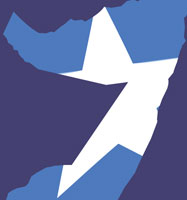UHCL students reach out to ‘Save A Child’
Jessica Casarez
The Signal
Texas experienced a terrible drought this past year and residents were affected in numerous ways. From scattered wildfires to restricted water usage, it took time and effort to adapt to living with water shortage. However, the situation in Texas is nothing compared to the extreme drought and severe living conditions currently ravaging Somalia.
Somalia is experiencing its worst drought in more than 60 years, with the head of the UN refugee agency defining it as the “worst humanitarian disaster” in the world. Earlier this year the United Nations officially declared a famine in several parts of Somalia, a classification defined by mortality rates greater than two people per 10,000 per day across a specific region. The areas most affected are southern Bakool and Lower Shabelle. Tens of thousands of Somalis have died of malnutrition-related causes in the past few months.
Students at UHCL have joined forces to raise awareness and monetary donations for the cause in Somalia. “Save a Child” originated after Maria Curtis, assistant professor of anthropology and cross-cultural studies, brought the crisis to the attention of the Women’s Studies Student Association (WSSA).
Tonya Tipton, former president of WSSA, knew it was something she wanted to be a part of as soon as she heard about it.
“I am a very committed social activist,” Tipton said. “This is very important to me, especially helping women and children.”
Mark Bowden, UN resident and humanitarian coordinator for Somalia, discussed the crisis in Somalia in 2008 during an interview. Bowden said that Somalia was not only battling the drought but also rising food prices and instability.
The instability Bowden referred to reflects the ongoing conflict between the Transitional Federal Government and the armed al-Shabab, an al-Qaeda-affiliated group. The Islamist militants forced Western aid organizations out of Somalia in 2009, although they have recently allowed limited access in order to provide assistance.
However, people trying to bring humanitarian relief to the country have reasons to fear for their lives. A Doctors Without Borders (DWB) team was attacked in Dabaab, Kenya, Oct. 13, in which a driver was hospitalized and two other staff citizens were abducted. DWB has not been able to establish contact with the staff members as of yet.
UN Secretary General Ban Ki-moon reported in July that 3.7 million people in Somalia are now in crisis. He estimated a total of $1.6 billion was needed to help in order to help prevent children from dying and providing an adequate response.
Instead of just having one organization raise money to aid Somalia, “Save a Child” has been opened up to all the student organizations at UHCL. Several organizations have committed and some have already held their fundraisers.
Udeshika Amarasinghe, former SGA representative and WSSA member, has been a guiding force in merging the organizations and heading up the cause. One of the ways WSSA has been raising money is through bake sales, such as the one held Oct. 6.
“We raised almost $400,” Amarasinghe said. “We baked and sold muffins, cookies, brownies and all these goodies.”
A few of the other organizations that are involved with Save a Child are the Indian Student Association, Muslim Student Association and Amazon Tree.
Once the money has been gathered from all the organizations, it will be donated to DWB, one of the leading organizations that has provided assistance to Somalia since 1991.
DWB currently provides free medical care in eight regions around Somalia. More than 1,400 Somalia staff provide free primary healthcare, surgery, treatment for malnutrition and many other medical conditions. Before the droughts, less than 20 percent of the patients treated in those regions were malnourished. Now the number has risen to almost 50 percent.
Amarasinghe admitted this is the organization’s first time working with DWB but she says this was the organization’s top choice.
“They have doctors working in Somalia and are sending people to work over there,” Amarasinghe said. “Other students said great things about DWB so it gave us reassurance.”
The situation in Somalia continues to worsen as resources are very limited and the number of people seeking refuge continues to rise. Since July, more than 150,000 Somalis have left the country’s central region in Bay, Bakool, Hiran and Lower and Middle Shabelle, to travel to Mogadishu, where the population is currently estimated at more than one million. Half of that number is estimated to be displaced refugees. Medical needs far exceed available health services and more people continue to arrive daily.
Although to some the situation may look hopeless, the Save a Child cause remains dedicated and focused with its efforts to send assistance to Somalia.
“Too often if you say there is no hope, people do not want to donate,” Tipton said. “But in cases like this, helping is absolutely necessary.”
Amarasinghe is in complete agreement with her fellow WSSA member.
“We can’t save the world but we can at least feed a child for a couple of weeks or months,” Amarasinghe said. “Hopefully more people will do something. Read about it or donate, but people need to be more aware of what is happening over there.”
In order to become involved, students can contact the WSSA organization at uhcl.wssa@uhl.edu or uhcl.wssa@gmail.com.

